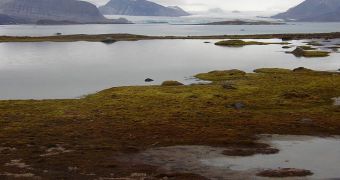An international team of researchers discovered in a new study that modern Native Americans and western Eurasians may share genetic origins. The conclusion is based on a careful analysis of genetic data collected from a fossil of an ancient human that lived in Siberia around 24,000 years ago.
The research sheds some new light on the origins of Native Americans, as well as on the timeline related to the settlement of the North American continent. Additionally, scientists may soon be able to develop new hypotheses on the type of humans that populated ancient Eurasia millennia ago.
The work was conducted by experts with the Center for GeoGenetics, which is based at the University of Copenhagen Natural History Museum of Denmark (NHMD). Researchers from the Uppsala University and the Texas A&M University were also involved in the study.
The genomic signatures extracted from the Siberian individuals may represent the origins of genetic material found in modern-day people living in Eurasia, and are also very close to those extracted from Native Americans. Researchers have been trying to figure out where this population originated for many years, thus far with little success.
Details of the investigation were published in this week's early online issue of the top scientific journal Nature. The work was focused on the remnants of a youth (MA-1) who lived in northeastern Eurasia some 24,000 years ago. The fossilized remains were dug up from the Mal’ta site, southcentral Siberia.
“Representing the oldest anatomically modern human genome reported thus far, the MA-1 individual has provided us with a unique window into the genetic landscape of Siberia some 24,000 years ago,” explains Center for GeoGenetics investigator Dr. Maanasa Raghavan.
“Interestingly, the MA-1 individual shows little to no genetic affinity to modern populations from the region from where he originated – south Siberia,” adds the expert, who is also one of the lead authors of the Nature paper
The study suggests that the population of which MA-1 was a part of accounts for around 38 percent of the genetic material found in modern Native Americans, with the other 62 percent being accounted for by genetic materials from populations in East Asia.
“The result came as a complete surprise to us. Who would have thought that present-day Native Americans, who we learned in school derive from East Asians, share recent evolutionary history with contemporary western Eurasians?” says Center for GeoGenetics professor Eske Willerslev.
“Even more intriguingly, this happened by gene flow from an ancient population that is so far represented only by the MA-1 individual living some 24,000 years ago,” adds the expert, who was the leader of the new study.

 14 DAY TRIAL //
14 DAY TRIAL //